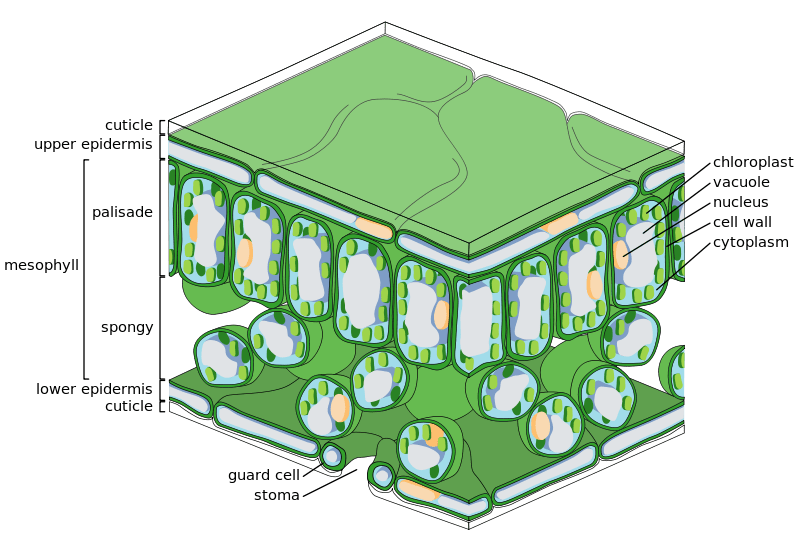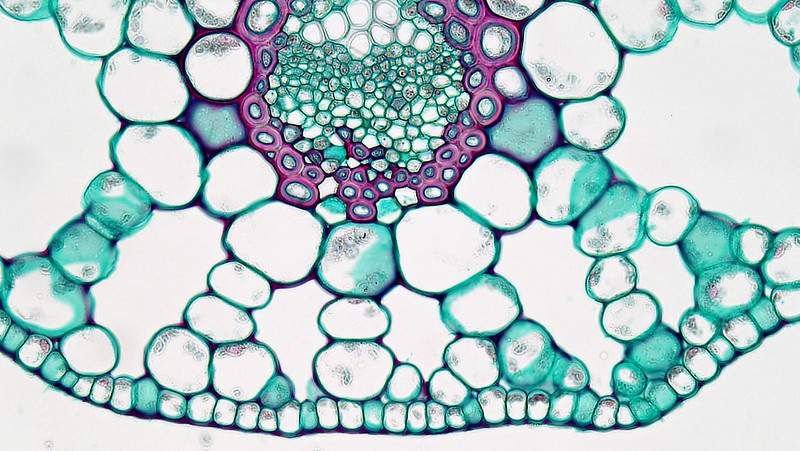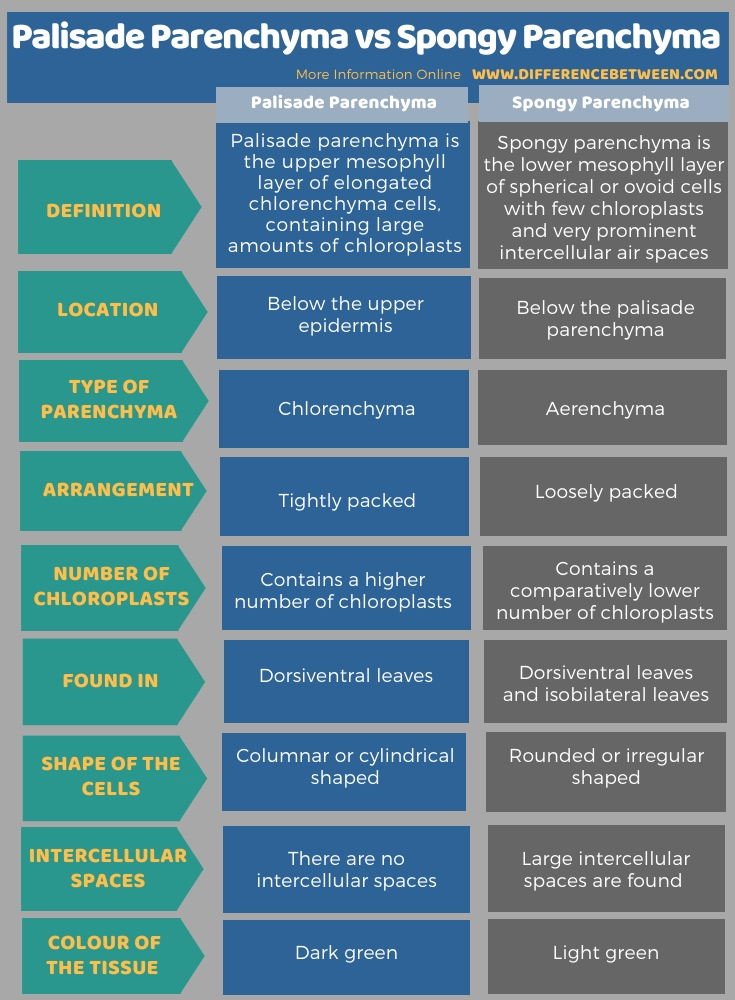Difference Between Palisade Parenchyma and Spongy Parenchyma
The key difference between palisade parenchyma and spongy parenchyma is that palisade parenchyma consists of columnar cells which are compacted tightly below the upper epidermis of a leaf while spongy parenchyma consists of rounded cells which are loosely arranged below the palisade parenchyma.
Leaves are the main structural parts of plants that produce food by photosynthesis. Thus, they are specialized in order to carry out photosynthesis. The cells are organized nicely in leaves. Also, there are two main types of photosynthetic cells in plant leaves. They are palisade parenchyma and spongy parenchyma. Both are mesophyll tissues. Both types of cells have chloroplasts and appear in green colour. Palisade parenchyma cells are present in dorsiventral leaves while spongy parenchyma cells are present in both dorsiventral and isobilateral leaves.
CONTENTS
1. Overview and Key Difference
2. What is Palisade Parenchyma
3. What is Spongy Parenchyma
4. Similarities Between Palisade Parenchyma and Spongy Parenchyma
5. Side by Side Comparison – Palisade Parenchyma vs Spongy Parenchyma in Tabular Form
6. Summary
What is Palisade Parenchyma?
Palisade parenchyma is the upper ground tissue present in the plant leaves. It is located just below the upper epidermis of dorsiventral leaves. It consists of columnar shaped cells. The cells are tightly packed without intercellular spaces.

Figure 01: Palisade Parenchyma
Chloroplasts are highly abundant in the palisade parenchyma tissue. Hence, the palisade parenchyma tissue appears in dark green colour. Unlike spongy parenchyma, palisade parenchyma cells do not have a respiratory cavity.
What is Spongy Parenchyma?
Spongy parenchyma is the lower and second ground tissue in plant leaves. It is located below the palisade parenchyma, towards the lower epidermis. Spongy parenchyma cells are loosely arranged; hence, there are a lot of intercellular spaces between cells. The cells are oval-shaped or irregular shaped.

Figure 02: Spongy Parenchyma
In comparison to palisade parenchyma, spongy parenchyma contains a low number of chloroplasts. Hence, this tissue appears in light green colour. Spongy parenchyma cells have respiratory cavities and cells are open to the outside through stomata.
What are the Similarities Between Palisade Parenchyma and Spongy Parenchyma?
- Both palisade parenchyma and spongy parenchyma are found in plant leaves.
- They are ground tissues.
- Both types of cells are photosynthetic.
- They appear in green colour due to the presence of chloroplasts.
- These cells have primary cell walls.
What is the Difference Between Palisade Parenchyma and Spongy Parenchyma?
Palisade parenchyma is the upper mesophyll layer of elongated chlorenchyma cells, containing large amounts of chloroplasts. In contrast, spongy parenchyma is the lower mesophyll layer of spherical or ovoid cells with few chloroplasts and very prominent intercellular air spaces. So, this is the key difference between palisade parenchyma and spongy parenchyma. Furthermore, palisade parenchyma is present beneath the upper epidermis, while spongy parenchyma is present beneath the palisade parenchyma towards the lower epidermis.
Moreover, palisade parenchyma has a large number of chloroplasts, while spongy parenchyma contains a low number of chloroplasts. Also, palisade parenchyma cells are tightly packed without the intercellular spaces, while the spongy parenchyma cells are loosely packed with a lot of intercellular spaces.
The below infographic summarizes the difference between palisade parenchyma and spongy parenchyma.

Summary – Palisade Parenchyma vs Spongy Parenchyma
Palisade parenchyma cells are present beneath the upper epidermis of dorsiventral leaves. They are columnar cells. Moreover, they have a high number of chloroplasts and they are tightly packed cells. On the other hand, spongy parenchyma cells are rounded and loosely packed. There are spaces between spongy parenchyma cells and they are located beneath the palisade parenchyma. In comparison to palisade parenchyma, spongy parenchyma cells have a low number of chloroplasts. Hence, the upper mesophyll layer appears in dark green while the lower mesophyll layer appears in less green. Thus, this summarizes the difference between palisade parenchyma and spongy parenchyma.
Reference:
1. Sengbusch, Peter v. Botany Online: Dermal Tissues, Parenchyma and Assimilation Tissues – Mesophyll, Available here.
Image Courtesy:
“Angiosperm Leaf:Spongy Mesophyll and Abaxial Epidermis in The Hydrophyte Potamogeton” By Berkshire Community College Bioscience Image Library (Public Domain) via Flickr
2. “Leaf Tissue Structure” By Zephyris – Own work (CC BY-SA 3.0) via Commons Wikimedia
ncG1vNJzZmivp6x7pbXFn5yrnZ6YsqOx07CcnqZemLyue8OinZ%2Bdopq7pLGMm5ytr5Wau268wKWgrJmUmnqxrdGepZygqaKubq3NnWSsqJ%2BjtLp5z5qpnqaTncaurY4%3D